Paediatric Orthopaedics
TENS nailing
Elastically-stable intramedullary nailing with the TEN (Titanium Elastic Nail) is used primarily for the management of diaphyseal and metaphyseal fractures in children.
Whether the TEN is indicated or not depends upon the age of the patient and the type and site of the fracture. Our Experience has shown that the lower limit is 3–4 years and the upper limit 13–15 years. We select the nail diameter according to the bone involved /diameter of the isthmus. Tens nail provides flexural stability, axial stability, translational stability and rotational stability.
It is primarily done for diaphyseal fractures of femur, tibia, forearm. Tens nails are inserted through small incisions from one end of fractures bone and inserted through the fracture after reduction under fluoroscopic guidance. Tens nails can be removed later from the same incision once fracture unites.
Clubfoot tenotomy
This procedure involves cutting of the strong tissue that connects the leg muscles to the heel (Achilles tendon) in order to release tension on the foot. This procedure is done through a small cut near the heel which requires no stitches. Your child will need to wear a cast for several weeks until tissue is healed.
Clubfoot Surgery
Most of the clubfoot cases can be treated without surgery. Deformity correction surgery involves surgical release of all tight structures and stabilization. This may be needed if the deformity is not completely corrected with stretching and bracing, or if the deformity returns after stretching and bracing.
DDH surgeries
Surgeries for Developmental Dysplasia of Hip (DDH)
The more common approach is to accept closed reductions that are stable with mild to moderate widening of the joint and to perform open reductions for unstable hips and those that are excessively wide on arthrography.
Open reduction can be performed from one of several medial approaches or from an anterior approach. We recommend using medial approach for children who are 1 year old and younger. In the older child, we prefer an anterior approach, which allows a capsulorrhaphy to be performed. After the open reduction, we place the child in a below-knee spica cast in the human position, with the hip in more than 90 degrees of flexion and moderate abduction. An intraoperative radiograph is obtained to confirm the reduction.
If considerable force is required to reduce the hip and the reduction seems tight, we perform a shortening femoral osteotomy to decompress the joint. After the hip is reduced and the capsulorrhaphy is performed, a spica cast is applied with the hip in an extended, abducted, and mildly internally rotated position. These “Petrie casts” allow for flexion and extension and are used for 4 to 6 more weeks. We perform an innominate osteotomy in patients who are older than 18 months old primarily when coverage is in doubt. Children who are older than 3 years at reduction usually need an acetabular procedure (Salter or Pemberton procedure) to cover the femoral head adequately.
SCFE surgeries
The primary purpose of definitive treatment for SCFE is to stabilize the capital femoral epiphysis to the femoral neck to prevent further slipping. The choice of treatment depends on the type of slip and its severity.
Definitive treatment alternatives for the management of SCFE include in situ internal fixation or pinning; bone graft epiphysiodesis; primary osteotomy through the apex or base of the femoral neck or intertrochanteric area, with or without fixation of the epiphysis to the femoral neck; and application of a spica cast.
A single cannulated screw provides stable fixation in most grades of slip. With unstable slips, two screws may be used for additional stability and rotational control. We allow protected partial weight bearing with crutches as soon as the patient is comfortable, usually within 24 hours of surgery; patients with unstable slips may be slower to walk. The patient uses crutches for 6 weeks, during which time the pain should resolve completely. Athletic activities are allowed after 3 months.
We consider open bone graft epiphysiodesis for SCFE when the severity of the slip is such that insertion of the screw without exiting the posterior femoral neck and reentering the capital epiphysis appears impossible, or when osteopenia or some other factor has resulted in inadequate fixation and continued progression of the slip.
Genu varum - bowed legs
The newborns have a physiological genu varum which is highest around the age of 1 year and later as the child grows the lower limbs become straight and then further progress to Valgus between the age of 3-4 years. It reaches normal angulation of 7-10 degrees by the age of 7 years.
Skeletally immature children with at least 2 years of growth left, are treated with Growth Modulation (Hemiepiphysiodesis), while the skeletally mature children with closed/fused growth plates require Osteotomy & Fixation.
Hemiepiphysiodesis is a lesser invasive procedure in which we use Clips/Bone Staples or plates on distal femoral physis or proximal tibial physis to control the growth at the growth plate and thereby correcting the deformity gradually. The advantage of this procedure is early recovery, no immobilization in plaster, and the child can regain regular activities within a week.
In skeletally mature children, we correct the deformity acutely at the distal femur or proximal tibia by removing a wedge (part of bone depending on the degree of deformity) and fixation with a larger plate and screw system or an external fixator. This procedure requires more rehabilitation, a longer period of rest, and non-weight bearing.
Genu valgum-knock knees
Knock knees is a condition in which knees are bent inwards. Treatment is mainly observation for genu valgum <15 degrees in a child < 7 years of age. Surgical management is indicated for a severe and progressive genu varum in a child> 7 years of age. In the growing child, we do medial hemiepiphysiodesis/epiphyseal stapling. After the skeletal maturity we go for osteotomy of either distal femur or proximal tibia or both. We do either lateral opening wedge osteotomy or medial closing wedge osteotomy.
Cerebral palsy surgeries
Surgery is one of the many options available to help children with cerebral palsy improve mobility, posture and ensure healthy growth. However, we recommend physical therapy and medication before surgery. Surgery can correct or improve movement and alignment in the legs, ankles, feet, hips, wrists and arms. These operations are performed on the muscles, tendons, bones and nerves. We perform the following surgeries with the aim to give children the greatest chance of living as independently as possible:-
- Muscle lengthening – Surgical lengthening of the muscles used to relieve tightness in the hands and fingers. Lengthening the arm muscles can help children grasp objects more easily and improve fine motor skills.
- Tendon lengthening – Lengthening tendons can reduce painful contractures, which is a permanent tightening of the tendons or muscles. This surgery is often used to improve a child’s ability to walk and sit upright.
- Tendon transfer – Tendon transfers typically involve the cutting and replacement of a tendon. The goal of tendon transfers is to ensure that the muscles in the body are properly aligned. This surgery also helps reduce any pain or walking problems that children with CP may be experiencing, as well as improving extension and flexibility of the wrists.
- Tenotomy/myotomy – Tenotomy describes the cutting of the tendon, whereas myotomy involves cutting the muscle. This procedure is used to improve muscle function, increase control of the upper limbs and enhance ability to grasp objects with hands and feet.
- Osteotomy – This procedure is used to realign joints for better posture and mobility. It involves repositioning bones at angles more conducive to healthy alignments and is commonly used to correct hip dislocations in children with CP.
- Arthrodesis – In severe cases of spasticity, when splints and casts aren’t enough, arthrodesis may be used to permanently fuse bones together. Fusing the bones in the ankle and foot can make it easier for a child to walk.
Osteomyelitis surgeries
Chronic osteomyelitis is a surgical disease that requires expertise of debridement and reconstruction modalities. We start antibiotics empirically in patients after cultures have been obtained, usually at the time of debridement. Once cultures and sensitivities are obtained, the antibiotic regimen is tailored accordingly.
Debridement: - Debridement is aimed at removing all infected or necrotic bone and soft tissue, often fully identified at the time of surgery. Precise bone debridement is best done with high-speed burrs and is performed until the paprika sign. Thermal effects from the burr are minimized with irrigation. Necrotic and infected tissue are sent for culture and sensitivity intraoperatively.
Stabilisation of the bone gap: - In patients with extensive or circumferential involvement of cortical bone, extensive resection of the infected bone results in a large bone gap. In such situations, proximal and distal healthy bone fragments are stabilised with external fixator or ilizarov ring fixator application.
Dead space management: - Antibiotic-impregnated PMMA beads produce bacterocidal levels of antibiotics for 2 to 4 weeks, depending on the antibiotic, and are usually removed after this time and replaced with cancellous bone graft or vascularized bone graft. Defects >30% of the bone volume need osseous reconstruction, often with vascularized bone transfer or other modalities. Small osseous defects with a large soft tissue component that are structurally stable can be filled with a myoplasty, in which muscle is either rotated to fill the defect or transferred from a distant site using a microvascular free flap. The Ilizarov frame has been used successfully in treatment of large defects resulting from debridement of osteomyelitis.

Dr. Manuj Wadhwa
Chairman & Executive Director- Elite Institutes of Orthopedics & Joint Replacement
- Ojas Hospitals, Panchkula
- Ivy Hospitals, Punjab
Awards Wining Doctor
- 2 Times World Book of Records
- 7 Times Limca Book of Records
Let’s Get In Touch

Sector 22, Panchkula
09:00 am - 04:00 pm
(By Prior Appointments)

Sector 71, Mohali
09:00 am - 04:00 pm
(By Prior Appointments)
Email us
Give us a Call
Book An Appointment








